
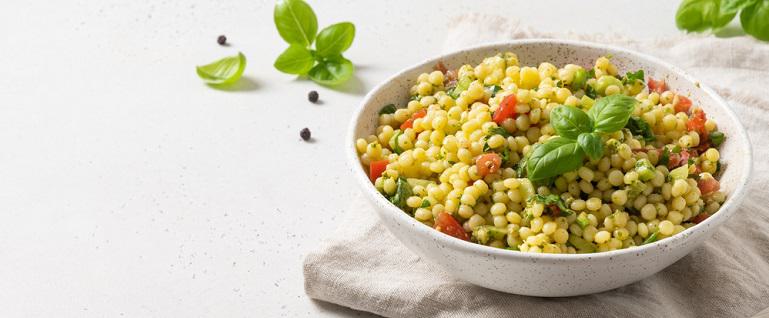
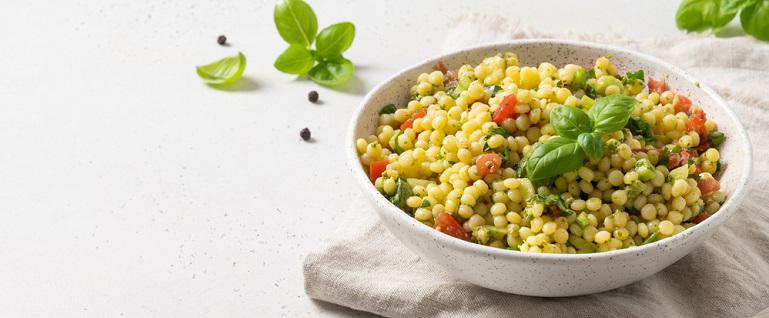
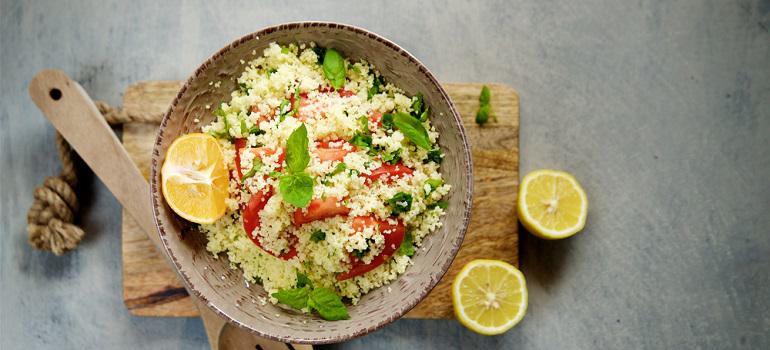 Derived from durum wheat, couscous has a naturally nutty flavor with just a hint of sweetness. The intensity of the taste varies depending on which type of couscous is purchased. However, it's generally subtle and can easily be mixed with sweet and savory ingredients.
The texture of couscous can also change depending on its size and the cooking method used. Most cooked couscous has a light and fluffy texture that produces a soft and chewy bite. While enjoying a bowl of plain couscous may be a bit bland, not many ingredients are needed to turn this dish into one that's bursting with flavor.
Derived from durum wheat, couscous has a naturally nutty flavor with just a hint of sweetness. The intensity of the taste varies depending on which type of couscous is purchased. However, it's generally subtle and can easily be mixed with sweet and savory ingredients.
The texture of couscous can also change depending on its size and the cooking method used. Most cooked couscous has a light and fluffy texture that produces a soft and chewy bite. While enjoying a bowl of plain couscous may be a bit bland, not many ingredients are needed to turn this dish into one that's bursting with flavor.
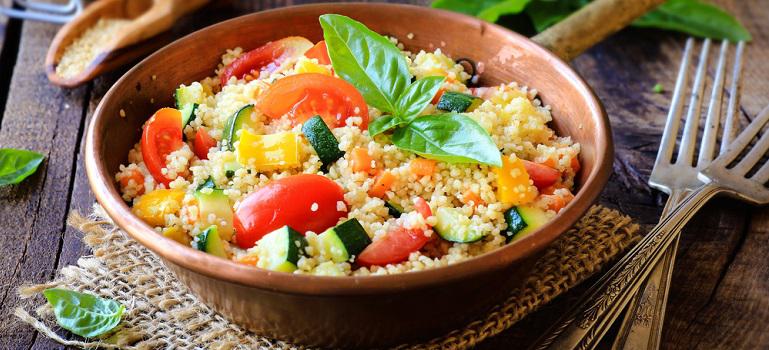 Because the only ingredient in couscous, durum wheat, is plant based, it's an excellent vegan and vegetarian food option. That being said, not all couscous dishes in restaurants are vegetarian friendly. So if you're eating out and unsure whether a dish meets your dietary needs, we recommend asking to make sure it's an entirely plant-based option.
Because the only ingredient in couscous, durum wheat, is plant based, it's an excellent vegan and vegetarian food option. That being said, not all couscous dishes in restaurants are vegetarian friendly. So if you're eating out and unsure whether a dish meets your dietary needs, we recommend asking to make sure it's an entirely plant-based option.
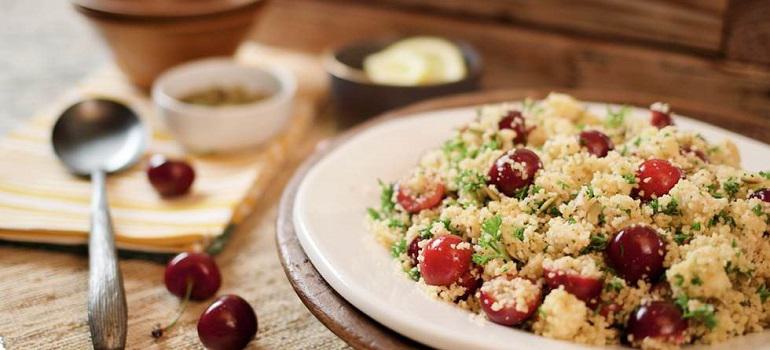 Create a batch of Fresh Cherry Pepita Golden Couscous Salad for a refreshingly good bowl of couscous. Simple to make, this vegetable couscous salad uses just five ingredients to create a meal that's bursting with flavor. Golden couscous, fresh cherries, chopped parsley, goat cheese crumbles and organic pumpkin seeds are combined to create a uniquely flavored couscous with a delicious texture. The dressing is just as simple and delicious with olive oil, lemon juice, salt and pepper. To turn this vegetarian recipe into a vegan one, swap out the goat cheese for a nut-based cheese like this Vegan Smoked Gouda Cheese, or sprinkle in a bit of nutritional yeast.
Create a batch of Fresh Cherry Pepita Golden Couscous Salad for a refreshingly good bowl of couscous. Simple to make, this vegetable couscous salad uses just five ingredients to create a meal that's bursting with flavor. Golden couscous, fresh cherries, chopped parsley, goat cheese crumbles and organic pumpkin seeds are combined to create a uniquely flavored couscous with a delicious texture. The dressing is just as simple and delicious with olive oil, lemon juice, salt and pepper. To turn this vegetarian recipe into a vegan one, swap out the goat cheese for a nut-based cheese like this Vegan Smoked Gouda Cheese, or sprinkle in a bit of nutritional yeast.
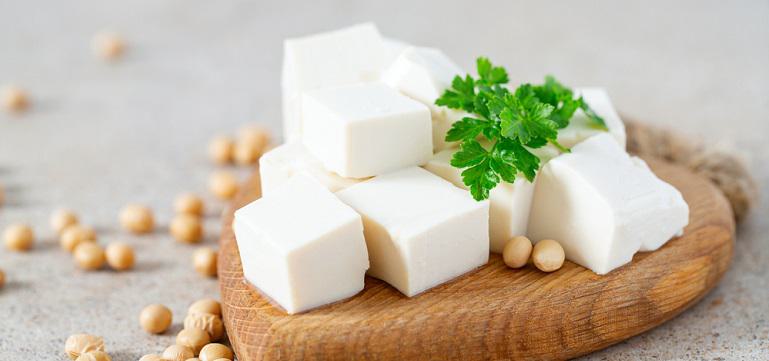 The great thing about couscous is that it can be combined with just about anything and taste great. That being said, we do have a few favorite vegetarian ingredients that we love combining with our couscous dishes. From tofu to nutritional yeast, this list of plant-based options is bound to spark your kitchen creativity.
The great thing about couscous is that it can be combined with just about anything and taste great. That being said, we do have a few favorite vegetarian ingredients that we love combining with our couscous dishes. From tofu to nutritional yeast, this list of plant-based options is bound to spark your kitchen creativity.